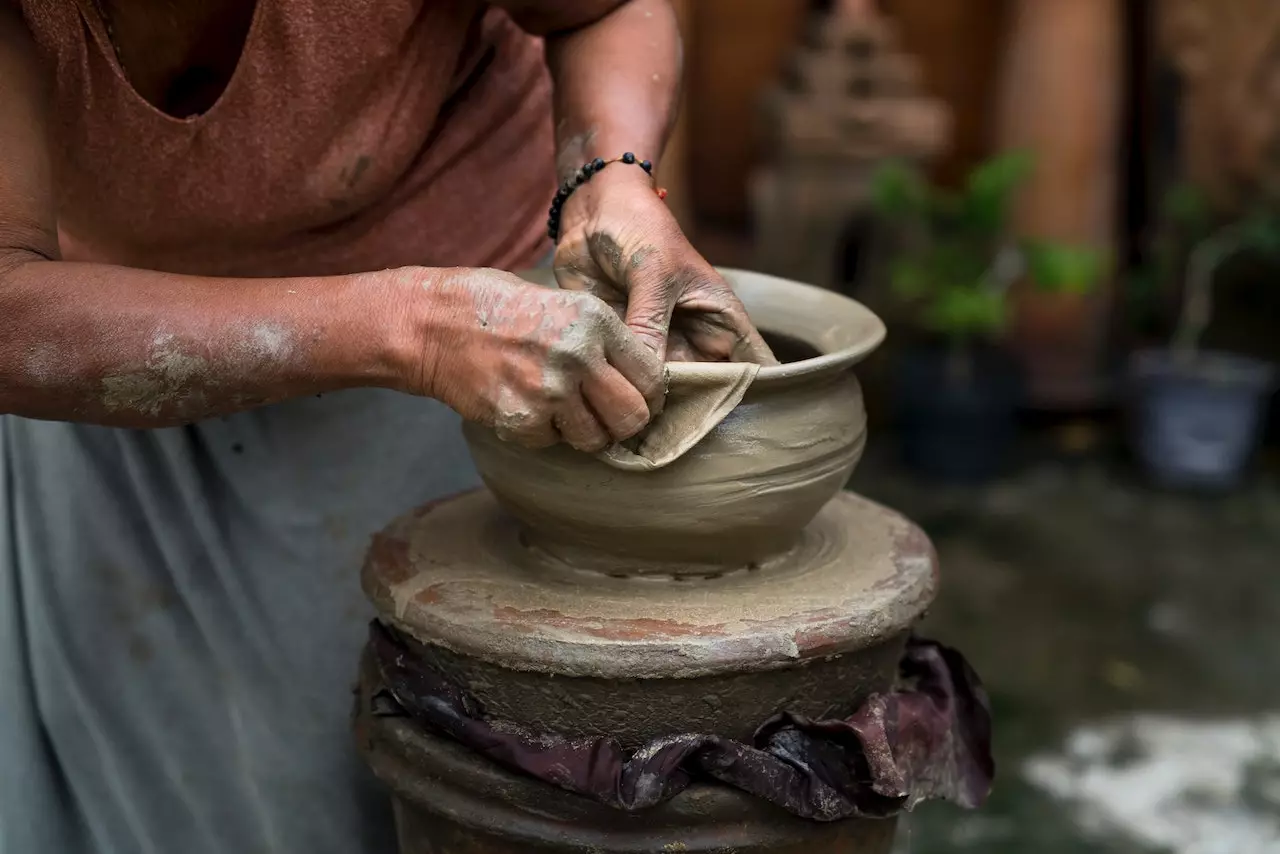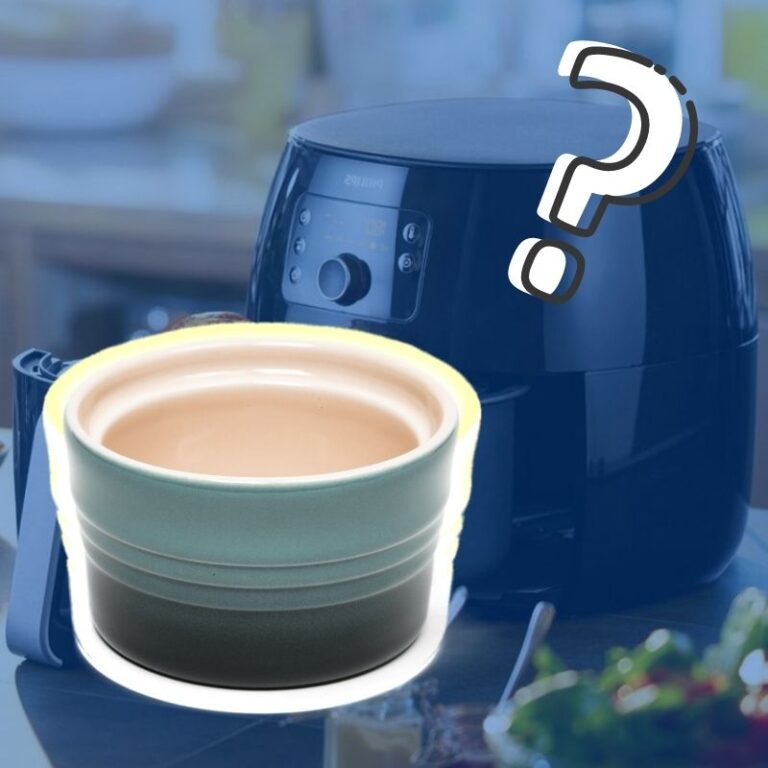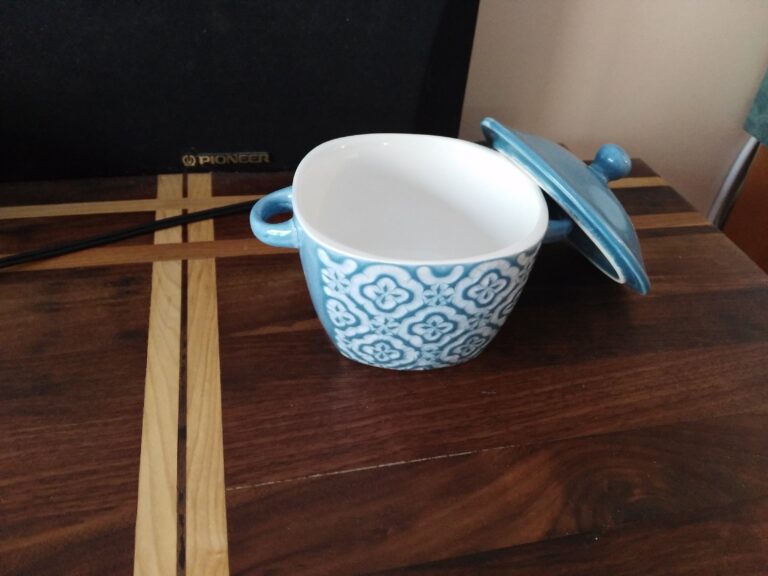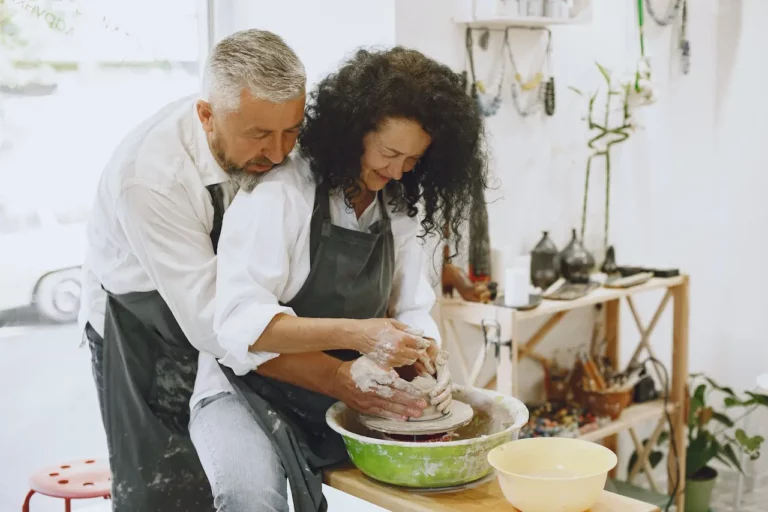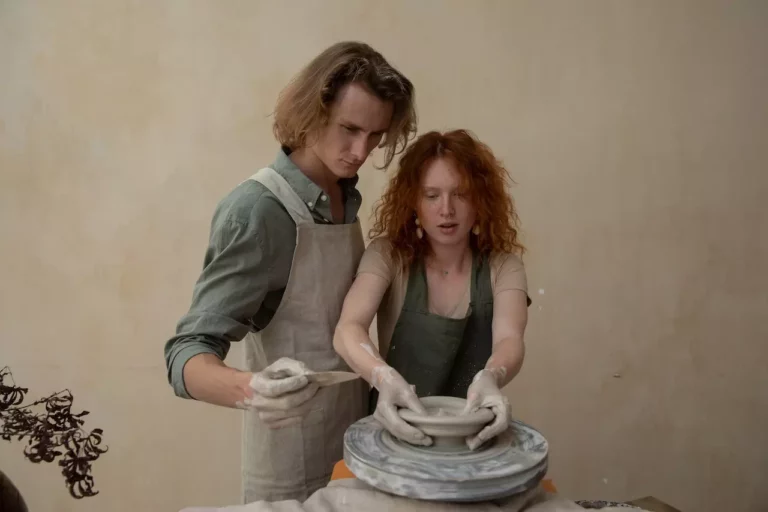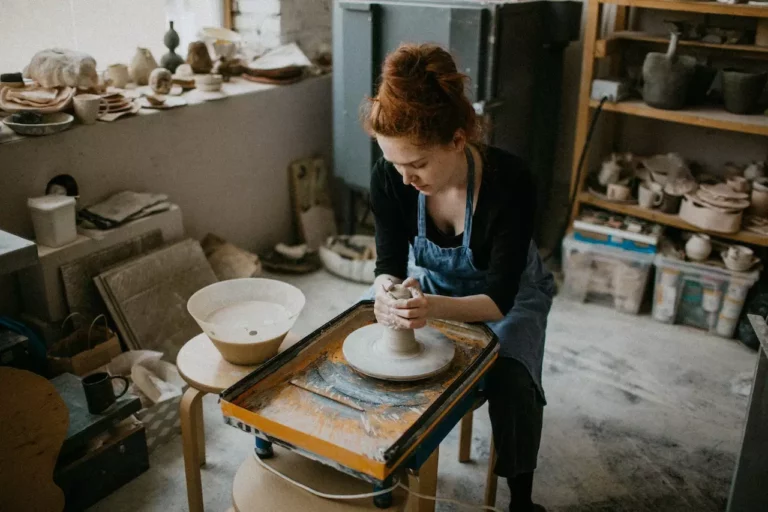What Material Is Used in Pottery?
Pottery is a centuries-old craft that involves the creation of various ceramic objects through the process of firing clay. The materials used in pottery can greatly impact the final appearance, durability, and functionality of the finished product.
In this article, we will explore the different materials commonly used in pottery, both traditional and modern, as well as some specialized pottery materials. By understanding these materials, you’ll gain insight into the diverse world of pottery and the unique characteristics they bring to the craft.
1. Introduction
Pottery is an art form that dates back thousands of years, with evidence of its existence found in ancient civilizations across the globe. The process of creating pottery involves shaping clay or other materials into desired forms, drying them, and then firing them in a kiln at high temperatures. The firing process transforms the raw materials into durable ceramic objects that can be used for functional purposes or as decorative pieces.
2. History of Pottery
Before delving into the materials used in pottery, it’s essential to understand the historical significance of this craft. Pottery has been an integral part of human culture for centuries, serving various purposes ranging from storage vessels for food and water to artistic expressions of beauty and craftsmanship.
From the earthenware of ancient civilizations to the delicate porcelain of China, pottery has evolved and diversified over time, influenced by cultural, technological, and artistic developments.
3. Traditional Pottery Materials
Clay:
Clay is one of the primary materials used in pottery. It is a natural substance composed of fine particles of decomposed rocks and minerals. Clay is readily available and easily moldable when mixed with water, making it a versatile material for creating pottery. Different types of clay, such as earthenware, stoneware, and porcelain, have varying characteristics and are suitable for different pottery techniques and firing temperatures.
Porcelain:
Porcelain is a type of ceramic material known for its delicate and translucent appearance. It is made from a specific type of clay called kaolin, which is fired at very high temperatures. Porcelain is highly valued for its strength, whiteness, and ability to retain intricate details. It has been historically associated with fine china and is often used for creating delicate tableware, figurines, and decorative objects.
Earthenware:
Earthenware is one of the oldest types of pottery, known for its porous nature and lower firing temperatures. It is made from clay mixed with various additives to enhance its workability and reduce shrinkage during firing. Earthenware is typically fired at temperatures between 1,000 and 1,150 degrees Celsius. It is commonly used for creating everyday pottery items like plates, bowls, and vases.
Stoneware:
Stoneware is a durable and versatile type of pottery that falls between earthenware and porcelain in terms of firing temperature and characteristics. It is fired at higher temperatures than earthenware, resulting in a denser and less porous material. Stoneware is known for its strength, resistance to scratching, and ability to hold liquids without leaking. It is often used for functional pottery like mugs, jugs, and baking dishes.
4. Modern Pottery Materials
Ceramic:
Ceramic is a broad term that encompasses various materials used in pottery. It refers to any inorganic, non-metallic solid made by the process of heating and cooling, including clay-based materials. Ceramic pottery can be created from different types of clay, each with its unique properties and firing requirements. Ceramic objects are versatile and can range from decorative sculptures to functional tableware.
Bone China:
Bone china is a type of porcelain that contains a significant proportion of bone ash in its composition. This addition gives bone china its characteristic translucency, strength, and ivory-white appearance. It is considered a high-quality pottery material and is often used for creating fine tableware, tea sets, and decorative pieces.
Terra Cotta:
Terra cotta is an Italian term that translates to “baked earth.” It is a type of earthenware known for its warm, reddish-brown color and porous nature. Terra cotta pottery is typically left unglazed and has a rustic aesthetic. It is commonly used for creating garden pots, tiles, and architectural ornaments.
Glass:
While not strictly a ceramic material, glass has been incorporated into pottery techniques to create unique and visually stunning results. Glass fusing and slumping techniques can be combined with clay to create pottery pieces with fused glass accents, adding color, texture, and a touch of elegance.
5. Specialized Pottery Materials
Raku:
Raku is a specialized pottery technique originating from Japan. It involves a rapid firing process and subsequent removal of the pottery from the kiln while still glowing hot. Raku pottery often exhibits unique patterns and textures resulting from the dramatic temperature changes and reduction firing techniques used. It is highly valued for its aesthetic appeal and is often used for creating decorative pieces and tea ceremony utensils.
Majolica:
Majolica is a type of pottery characterized by its vibrant colors and intricate hand-painted designs. It originated in Italy during the Renaissance and has since spread to other parts of Europe and the world. Majolica pottery is typically made from earthenware clay and coated with a tin glaze before being decorated with colorful ceramic paints.
Faience:
Faience is a type of pottery that originated in ancient Egypt and is known for its vivid blue and white colors. It is made from a low-fired, porous earthenware clay covered with a tin glaze. Faience pottery is often adorned with intricate geometric or floral designs and has been used historically for decorative tiles, vessels, and jewelry.
Celadon:
Celadon is a type of pottery originating from East Asia, known for its distinctive pale green or gray-green color. It is made from a high-fired stoneware or porcelain clay and typically glazed with a translucent green glaze. Celadon pottery is highly regarded for its elegant simplicity and is often associated with tea ceremonies and fine dining.
6. Factors Influencing Material Selection
The choice of pottery material depends on several factors, including the intended purpose of the piece, the desired aesthetic, and the artist’s skill level. Factors such as firing temperature, clay composition, glazes, and decorative techniques all play a role in material selection.
The availability and cost of materials also influence the choices made by potters. By understanding these factors, both potters and pottery enthusiasts can appreciate the nuances of material selection and its impact on the final product.
FAQs (Frequently Asked Questions)
1. What is the most common material used in pottery?
The most common material used in pottery is clay. It is readily available, moldable, and can be fired at various temperatures to create different types of pottery.
2. Can pottery be made from recycled materials?
Yes, pottery can be made from recycled materials. Some potters incorporate recycled clay or use reclaimed materials like glass in their pottery creations, adding an eco-friendly aspect to their work.
3. Are all pottery materials food-safe?
Not all pottery materials are food-safe. Some glazes or materials may contain toxic substances, so it’s important for potters to use food-safe glazes and follow proper firing techniques to ensure the safety of their pottery for food and drink use.
4. Can you mix different pottery materials in one piece?
Yes, it is possible to mix different pottery materials in one piece. Some potters experiment with combining clay types or incorporating other materials like glass or metals to create unique effects and textures in their pottery.
5. What are some famous pottery styles around the world?
There are numerous famous pottery styles around the world. Some notable examples include Japanese porcelain, Chinese celadon, Greek black-figure pottery, and Native American pueblo pottery. Each style carries its own cultural significance and artistic traditions.
7. Conclusion
Pottery is a rich and diverse art form that relies on a variety of materials to bring artistic visions to life. From traditional clay-based materials like earthenware and stoneware to modern ceramics and specialized techniques like raku and majolica, each material contributes its unique qualities to the world of pottery. By exploring the different materials used in pottery, we gain a deeper understanding of the craftsmanship and skill involved in this ancient art form.
